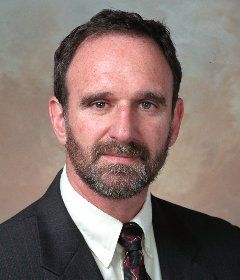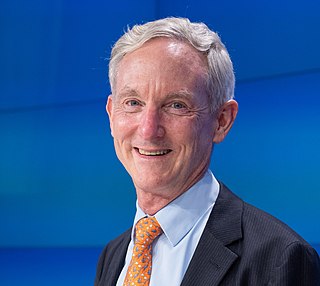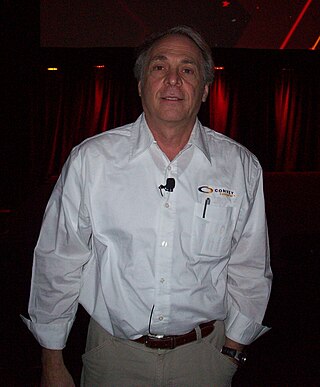Related Research Articles

John Adam Presper Eckert Jr. was an American electrical engineer and computer pioneer. With John Mauchly, he designed the first general-purpose electronic digital computer (ENIAC), presented the first course in computing topics, founded the Eckert–Mauchly Computer Corporation, and designed the first commercial computer in the U.S., the UNIVAC, which incorporated Eckert's invention of the mercury delay-line memory.

Butler W. Lampson FRS is an American computer scientist best known for his contributions to the development and implementation of distributed personal computing.

Ivan Edward Sutherland is an American computer scientist and Internet pioneer, widely regarded as a pioneer of computer graphics. His early work in computer graphics as well as his teaching with David C. Evans in that subject at the University of Utah in the 1970s was pioneering in the field. Sutherland, Evans, and their students from that era developed several foundations of modern computer graphics. He received the Turing Award from the Association for Computing Machinery in 1988 for the invention of the Sketchpad, an early predecessor to the sort of graphical user interface that has become ubiquitous in personal computers. He is a member of the National Academy of Engineering, as well as the National Academy of Sciences among many other major awards. In 2012, he was awarded the Kyoto Prize in Advanced Technology for "pioneering achievements in the development of computer graphics and interactive interfaces".

Donald Oscar Pederson was an American professor of electrical engineering at the University of California, Berkeley, and one of the designers of SPICE, a simulator for integrated circuits that has been universally used as a teaching tool and in the everyday work of circuits engineers. The IEEE Donald O. Pederson Award in Solid-State Circuits is named in his honor.
William Charles Norris was an American business executive. He was the CEO of Control Data Corporation, at one time one of the most powerful and respected computer companies in the world. He is famous for taking on IBM in a head-on fight and winning, as well as being a social activist who used Control Data's expansion in the late 1960s to bring jobs and training to inner cities and disadvantaged communities.

Robert Elliot Kahn is an American electrical engineer who, along with Vint Cerf, first proposed the Transmission Control Protocol (TCP) and the Internet Protocol (IP), the fundamental communication protocols at the heart of the Internet.

Martin Edward Hellman is an American cryptologist and mathematician, best known for his invention of public-key cryptography in cooperation with Whitfield Diffie and Ralph Merkle. Hellman is a longtime contributor to the computer privacy debate, and has applied risk analysis to a potential failure of nuclear deterrence.

Jack Joseph Dongarra is an American computer scientist and mathematician. He is the American University Distinguished Professor of Computer Science in the Electrical Engineering and Computer Science Department at the University of Tennessee. He holds the position of a Distinguished Research Staff member in the Computer Science and Mathematics Division at Oak Ridge National Laboratory, Turing Fellowship in the School of Mathematics at the University of Manchester, and is an adjunct professor and teacher in the Computer Science Department at Rice University. He served as a faculty fellow at the Texas A&M University Institute for Advanced Study (2014–2018). Dongarra is the founding director of the Innovative Computing Laboratory at the University of Tennessee. He was the recipient of the Turing Award in 2021.

PLATO, also known as Project Plato and Project PLATO, was the first generalized computer-assisted instruction system. Starting in 1960, it ran on the University of Illinois's ILLIAC I computer. By the late 1970s, it supported several thousand graphics terminals distributed worldwide, running on nearly a dozen different networked mainframe computers. Many modern concepts in multi-user computing were first developed on PLATO, including forums, message boards, online testing, email, chat rooms, picture languages, instant messaging, remote screen sharing, and multiplayer video games.
Bernard M. Oliver, also known as Barney Oliver, was a scientist who made contributions in many fields, including radar, television, and computers. He was the founder and director of Hewlett-Packard (HP) laboratories until his retirement in 1981. He is also a recognized pioneer in the search for extraterrestrial intelligence (SETI). Oliver was president of the Institute of Electrical and Electronics Engineers in 1965. In 1986, Oliver was a National Medal of Science recipient for Engineering Science and on February 11, 2004 it was announced that Oliver had been inducted into the National Inventors Hall of Fame.

Frank Thomson "Tom" Leighton is the CEO of Akamai Technologies, the company he co-founded with the late Daniel Lewin in 1998. As one of the world's preeminent authorities on algorithms for network applications and cybersecurity, Leighton discovered a solution to free up web congestion using applied mathematics and distributed computing.

Steven "Steve" J. Wallach is an engineer, consultant and technology manager. He is a Seymour Cray Computer Engineering Award recipient.

Donald D. Chamberlin is an American computer scientist who is one of the principal designers of the original SQL language specification with Raymond Boyce. He also made significant contributions to the development of XQuery.
Michael Shur is a Russian and American physicist and a professor of solid state electronics and electrical engineering at Rensselaer Polytechnic Institute.

Mark A. Horowitz is an American electrical engineer, computer scientist, inventor, and entrepreneur who is the Yahoo! Founders Professor in the School of Engineering and the Fortinet Founders Chair of the Department of Electrical Engineering at Stanford University. He holds a joint appointment in the Electrical Engineering and Computer Science departments and previously served as the Chair of the Electrical Engineering department from 2008 to 2012. He is a co-founder, the former chairman, and the former chief scientist of Rambus Inc.. Horowitz has authored over 700 published conference and research papers and is among the most highly-cited computer architects of all time. He is a prolific inventor and holds 374 patents as of 2023.
Arvind is the Johnson Professor of Computer Science and Engineering in the Computer Science and Artificial Intelligence Laboratory (CSAIL) at the Massachusetts Institute of Technology (MIT). He is a Fellow of the Institute of Electrical and Electronics Engineers (IEEE) and the Association for Computing Machinery (ACM). He was also elected as a member into the National Academy of Engineering in 2008 for contributions to dataflow and multithread computing and the development of tools for the high-level synthesis of digital electronics hardware.

George Harry Heilmeier was an American engineer, manager, and a pioneering contributor to liquid crystal displays (LCDs), for which he was inducted into the National Inventors Hall of Fame. Heilmeier's work is an IEEE Milestone.
Hiram Gene Slottow (1921–1989) was a professor of electrical engineering at the University of Illinois at Urbana–Champaign. He was the co-inventor of the plasma display.
James E. Thornton was an American computer engineer.
References
- ↑ Consumer Electronics Hall of Fame 2006 inductee bio Archived October 12, 2011, at the Wayback Machine
- ↑ "Donald L. Bitzer" . Retrieved September 4, 2019.
- ↑ Ashish Valentine (November 26, 2014). "Professor Don Bitzer: Father of PLATO discusses his work" . Retrieved September 4, 2019.
- ↑ "Dr. Donald Bitzer". November 29, 2011. Retrieved September 4, 2019.
- 1 2 "Alma Mater Inducts Bitzer". North Carolina State University. March 23, 2011. Retrieved September 4, 2019.
- ↑ "College of Engineering at NC State University, Achieve!". Archived from the original on December 30, 2007. Retrieved October 21, 2007.
- ↑ "NAE Elects 78 New Members". Science . 184 (4135): 446. 1974. doi:10.1126/science.184.4135.446. PMID 17736512.
- ↑ "Rouskas named IEEE Fellow" (PDF). North Carolina State University. Retrieved September 4, 2019.
- ↑ "Donald L. Bitzer and H. Gene Slottow Creativity Award" . Retrieved September 4, 2019.
- ↑ Michael Barbaro (October 7, 2002). "The Emmy Goes to . . . Flat-Screen Plasma TV". The Washington Post . Retrieved September 4, 2019.
- ↑ "Donald L. Bitzer". National Inventors Hall of Fame. Retrieved September 4, 2019.
- ↑ "Bitzer named Fellow of National Academy of Inventors". National Academy of Inventors. May 2, 2018. Retrieved September 4, 2019.
- ↑ Emily Packard (May 7, 2019). "Two Faculty Win Holladay Medal" . Retrieved September 4, 2019.